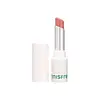What's inside
What's inside
 Key Ingredients
Key Ingredients

 Benefits
Benefits

 Concerns
Concerns

 Ingredients Side-by-side
Ingredients Side-by-side

Water
Skin ConditioningOctyldodecanol
EmollientDimethicone
EmollientAlcohol Denat.
AntimicrobialAcrylates Copolymer
Polysorbate 60
EmulsifyingEthylcellulose
Behenyl Alcohol
EmollientPentylene Glycol
Skin ConditioningSodium Acrylate/Sodium Acryloyldimethyl Taurate Copolymer
Emulsion StabilisingSilica
AbrasiveSorbitan Stearate
EmulsifyingIsohexadecane
EmollientPhenoxyethanol
PreservativePolyglyceryl-2 Triisostearate
EmulsifyingDiisostearyl Malate
EmollientPolysorbate 80
EmulsifyingCI 77491
Cosmetic ColorantParfum
MaskingCI 77891
Cosmetic ColorantCI 15850
Cosmetic ColorantCI 77499
Cosmetic ColorantSorbitan Oleate
EmulsifyingPolyglyceryl-2 Diisostearate
EmulsifyingAroma
CI 17200
Cosmetic ColorantTrisodium Ethylenediamine Disuccinate
Ethylhexylglycerin
Skin ConditioningCI 15985
Cosmetic ColorantCI 42090
Cosmetic ColorantButylene Glycol
HumectantActinidia Chinensis Fruit Extract
EmollientCarica Papaya Fruit Extract
Skin ConditioningCitrus Paradisi Fruit Extract
Skin ConditioningCocos Nucifera Fruit Extract
EmollientMangifera Indica Fruit Extract
Skin ConditioningPsidium Guajava Fruit Extract
AstringentCI 19140
Cosmetic ColorantCI 77492
Cosmetic ColorantCI 45410
Cosmetic ColorantWater, Octyldodecanol, Dimethicone, Alcohol Denat., Acrylates Copolymer, Polysorbate 60, Ethylcellulose, Behenyl Alcohol, Pentylene Glycol, Sodium Acrylate/Sodium Acryloyldimethyl Taurate Copolymer, Silica, Sorbitan Stearate, Isohexadecane, Phenoxyethanol, Polyglyceryl-2 Triisostearate, Diisostearyl Malate, Polysorbate 80, CI 77491, Parfum, CI 77891, CI 15850, CI 77499, Sorbitan Oleate, Polyglyceryl-2 Diisostearate, Aroma, CI 17200, Trisodium Ethylenediamine Disuccinate, Ethylhexylglycerin, CI 15985, CI 42090, Butylene Glycol, Actinidia Chinensis Fruit Extract, Carica Papaya Fruit Extract, Citrus Paradisi Fruit Extract, Cocos Nucifera Fruit Extract, Mangifera Indica Fruit Extract, Psidium Guajava Fruit Extract, CI 19140, CI 77492, CI 45410
Dimethicone
EmollientPhenyl Trimethicone
Skin ConditioningSynthetic Wax
AbrasivePolyglyceryl-2 Triisostearate
EmulsifyingMicrocrystalline Wax
Emulsion StabilisingCI 77891
Cosmetic ColorantMica
Cosmetic ColorantPentaerythrityl Tetraisostearate
EmollientDiisostearyl Malate
EmollientDimethicone/Polyglycerin-3 Crosspolymer
CleansingCI 77491
Cosmetic ColorantHydrogenated Polyisobutene
EmollientSilica
AbrasiveButylene Glycol Dicaprylate/Dicaprate
EmollientSilica Dimethicone Silylate
AbsorbentDisteardimonium Hectorite
StabilisingPolyglyceryl-2 Diisostearate
EmulsifyingPropylene Carbonate
SolventMethicone
EmollientAluminum Hydroxide
EmollientButyrospermum Parkii Butter
Skin ConditioningTheobroma Cacao Seed Butter
EmollientAstrocaryum Murumuru Seed Butter
EmollientAluminum Starch Octenylsuccinate
AbsorbentTriethoxycaprylylsilane
Dipropylene Glycol
HumectantHydroxypropyl Bispalmitamide Mea
EmollientMangifera Indica Seed Butter
Skin ConditioningCI 45410
Cosmetic ColorantSodium Citrate
BufferingCI 77499
Cosmetic ColorantTocopherol
AntioxidantTbhq
AntioxidantDimethicone, Phenyl Trimethicone, Synthetic Wax, Polyglyceryl-2 Triisostearate, Microcrystalline Wax, CI 77891, Mica, Pentaerythrityl Tetraisostearate, Diisostearyl Malate, Dimethicone/Polyglycerin-3 Crosspolymer, CI 77491, Hydrogenated Polyisobutene, Silica, Butylene Glycol Dicaprylate/Dicaprate, Silica Dimethicone Silylate, Disteardimonium Hectorite, Polyglyceryl-2 Diisostearate, Propylene Carbonate, Methicone, Aluminum Hydroxide, Butyrospermum Parkii Butter, Theobroma Cacao Seed Butter, Astrocaryum Murumuru Seed Butter, Aluminum Starch Octenylsuccinate, Triethoxycaprylylsilane, Dipropylene Glycol, Hydroxypropyl Bispalmitamide Mea, Mangifera Indica Seed Butter, CI 45410, Sodium Citrate, CI 77499, Tocopherol, Tbhq
 Reviews
Reviews

Ingredients Explained
These ingredients are found in both products.
Ingredients higher up in an ingredient list are typically present in a larger amount.
CI 45410 is a synthetic red-pigment and dye.
It often goes by both Red 28 or Red 27; manufacturers label both ingredients as CI 45410.
This dye is commonly found in makeup because it imparts a vivid color. Some types of this dye change color based on pH level and interaction with moisture:
Your skin has a natural pH of around 4.5 - 5.5.
According to the FDA, CI 45410 is not permitted for use in eye products.
Red 27 is a flourescein dye and commonly used as a fluorescent tracer in medicine.
Learn more about CI 45410Ci 77491 is also hydrated iron III oxide. It's sole purpose is to give a red/pink hue to products.
Iron III oxides are classified as inorganic chemicals for coloring.
Synthetically created Ci 77491 is considered safer than those naturally found. This is because the synthetically created version may contain less impurities. Iron oxides are generally non-toxic and non-allergenic.
Learn more about CI 77491Ci 77499 is also hydrated iron III oxide. It is created from mixing red and black iron oxides. This helps give shades of darkness to a product.
Iron III oxides are classified as inorganic chemicals for coloring.
Ci 77891 is a white pigment from Titanium dioxide. It is naturally found in minerals such as rutile and ilmenite.
It's main function is to add a white color to cosmetics. It can also be mixed with other colors to create different shades.
Ci 77891 is commonly found in sunscreens due to its ability to block UV rays.
Learn more about CI 77891Diisostearyl Malate is an emollient and most often used in lip products. It comes from isostearyl alcohol, a fatty acid, and malic acid, an AHA.
As an emollient, Diisostearyl Malate helps create a thin film on your skin to trap moisture in. This helps keep your skin soft and smooth.
Dimethicone is a type of synthetic silicone created from natural materials such as quartz.
What it does:
Dimethicone comes in different viscosities:
Depending on the viscosity, dimethicone has different properties.
Ingredients lists don't always show which type is used, so we recommend reaching out to the brand if you have questions about the viscosity.
This ingredient is unlikely to cause irritation because it does not get absorbed into skin. However, people with silicone allergies should be careful about using this ingredient.
Note: Dimethicone may contribute to pilling. This is because it is not oil or water soluble, so pilling may occur when layered with products. When mixed with heavy oils in a formula, the outcome is also quite greasy.
Learn more about DimethiconePolyglyceryl-2 Diisostearate isn't fungal acne safe.
This ingredient is a form of glycerin with emulsifying and emollient properties.
As an emulsifier, this ingredient helps keep products together while adding a thick texture. The manufacturer states this ingredient has emollient properties. Emollients help keep the skin hydrated by trapping moisture in.
Polyglyceryl-2 Triisostearate is created by reacting diglycerin and isostearic acid. Due to the isostearic acid base, it may not be safe for Malassezia or fungal acne.
Learn more about Polyglyceryl-2 TriisostearateSilica, also known as silicon dioxide, is a naturally occurring mineral. It is used as a fine, spherical, and porous powder in cosmetics.
Though it has exfoliant properties, the function of silica varies depending on the product.
The unique structure of silica enhances the spreadability and adds smoothness, making it a great texture enhancer.
It is also used as an active carrier, emulsifier, and mattifier due to its ability to absorb excess oil.
In some products, tiny microneedles called spicules are made from silica or hydrolyzed sponge. When you rub them in, they lightly polish away dead skin layers and enhance the penetration of active ingredients.
Learn more about Silica